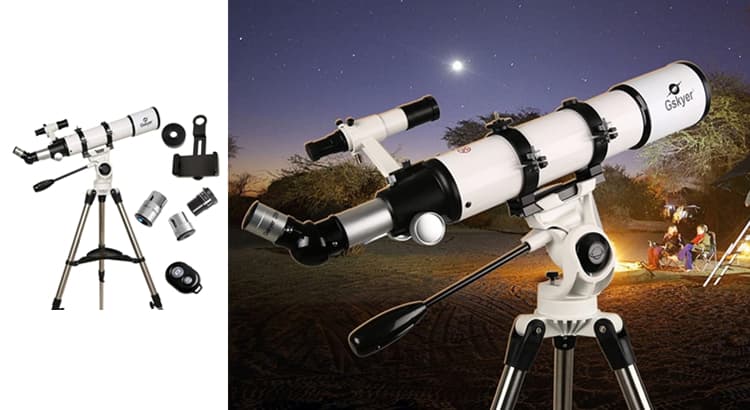When it comes to observing the planets in our solar system, having the right telescope can make all the difference. Whether you’re a seasoned astronomer or a casual stargazer, selecting the best telescope for viewing planets can enhance your celestial experience and provide you with unforgettable views of Jupiter’s moons, Saturn’s rings, and the intricate surface features of Mars.
In this article, we’ll explore the different types of telescopes suited for planet viewing and offer insights into choosing the perfect instrument for your astronomical adventures.
Refractor Telescopes: Capturing Crisp Planetary Detail
Refractor telescopes, also known as refracting telescopes, utilize lenses to gather and focus light, providing crisp, high-contrast views of the planets. These telescopes are prized for their simplicity, durability, and low maintenance requirements, making them an excellent choice for beginners and experienced astronomers alike.
With their ability to minimize chromatic aberration and deliver sharp planetary detail, refractor telescopes are ideal for observing the intricate cloud bands of Jupiter, the stunning rings of Saturn, and the polar ice caps of Mars.
Reflecting Telescopes: Unlocking Planetary Mysteries with Mirrors
Reflecting telescopes, also known as reflectors, use mirrors instead of lenses to gather and focus light, offering astronomers an alternative approach to planetary observation. These telescopes are renowned for their affordability, versatility, and ability to provide larger apertures at a lower cost compared to refractors.
With their precise optics and excellent light-gathering capabilities, reflecting telescopes excel at revealing fine details on the surfaces of the planets, including the swirling storms of Jupiter, the intricate ring structure of Saturn, and the rugged terrain of the Moon.
Catadioptric Telescopes: Versatile Solutions for Planetary Exploration
Catadioptric telescopes, such as Schmidt-Cassegrain and Maksutov-Cassegrain designs, combine lenses and mirrors to achieve compact, versatile instruments ideal for planetary viewing. These telescopes offer the best of both worlds, with the compactness of refractors and the light-gathering ability of reflectors.
With their excellent optics and portability, catadioptric telescopes are well-suited for observing planets from both urban and rural locations, providing astronomers with stunning views of planetary features such as Jupiter’s Great Red Spot, Saturn’s Cassini Division, and the phases of Venus.
Choosing the Right Telescope for Your Planetary Observations
When selecting a telescope for viewing planets, there are several factors to consider to ensure an optimal viewing experience:
1. Aperture Size: A larger aperture allows more light to enter the telescope, resulting in brighter and more detailed views of the planets. For planetary observation, a telescope with a minimum aperture of 70mm (2.8 inches) is recommended to reveal fine surface features and subtle atmospheric details.
2. Magnification: While high magnification can enhance planetary detail, it is essential to pair it with appropriate aperture size to avoid image degradation. A general rule of thumb is to limit magnification to twice the telescope’s aperture in millimeters (e.g., a 100mm telescope can comfortably handle magnifications up to 200x).
3. Mount Stability: A stable mount is crucial for steady planetary observations, especially at high magnifications. Choose a telescope with a sturdy equatorial or alt-azimuth mount to minimize vibrations and ensure smooth tracking of celestial objects.
4. Optical Quality: Look for telescopes with high-quality optics and precision-crafted lenses or mirrors to maximize planetary detail and contrast. Avoid telescopes with significant optical defects or poor collimation, as they can detract from the viewing experience.
Conclusion
In conclusion, selecting the best telescope for viewing planets depends on your preferences, budget, and observing conditions.
Whether you opt for a refractor, reflector, or catadioptric telescope, choosing a telescope with the right aperture size, magnification capabilities, mount stability, and optical quality can enhance your planetary observations and provide you with unforgettable views of the wonders of the solar system.
So, grab your telescope, head outside, and prepare to embark on a celestial journey filled with breathtaking planetary vistas and astronomical discoveries.





